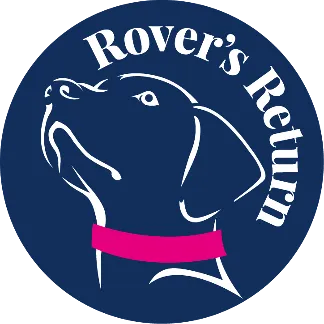Book a FREE 1:1 Assessment Call By Clicking HERE
Specialising In Dog Reactive Behviour
Accredited by APDT, ABTC and UK DOG Behaviour and Training Charter
Qualified and Experienced
Force Free Trainer and Behaviourist
Dog Training Leicestershire Educational Blogs

A Guide to Counterconditioning and Desensitisation
Taming the Triggers: A Guide to Counterconditioning and Desensitisation
We all have things that make us uncomfortable, anxious, or even fearful. Whether it's public speaking, spiders, or the sound of a dentist's drill, these triggers can significantly impact our lives. It is no different for our pet dogs,
Fortunately, we can use techniques to manage these reactions by ucounterconditioning and desensitising current behaviour patterns. While often used together, they are distinct processes that work in tandem to help us overcome our fears and anxieties.

Understanding the Roots of Fear:
Before diving into the techniques, it's important to understand how negative associations develop.
Often, a fear or anxiety stems from a learned response. We might have had a negative experience with a particular stimulus, such as noises, dogs, humans and other animals or we might have observed another dog's response (such as a multi-dog household) reacting fearfully, leading us to adopt the same response. This association can become deeply ingrained, making it difficult to break free from the fear.
Desensitisation: Gradual Exposure for Gradual Relief:
Desensitisation, also known as systematic desensitisation, is a technique that involves gradually exposing your dog to the feared stimulus while in a relaxed state. The key here is a relaxed state. Exposing your dog to triggers they cannot cope with will reinforce the behaviour that you are trying to change.
Success will begin to form when you expose your dog to minimal anxiety and progressively work your way up to the most challenging triggers. Often this requires professional help because if done incorrectly, the behaviour will grow.
Imagine someone with a fear of dogs. Desensitisation might start with looking at pictures of dogs, then watching videos of dogs, then perhaps standing across the street from a dog park, and eventually, with time and patience, interacting with a friendly dog.
Obviously, showing a picture of a dog won’t help them to reduce fear, but exposure at their own pace is essential, this could be from across the rod, or meters away. Each dog is an individual.
The process is broken down into small, manageable steps, ensuring that your dog never feels overwhelmed.

The Importance of Calmness:
A crucial component of desensitisation is calmness and reducing their need to react adversely. While confronting the feared stimulus, it's essential to maintain a relaxed, calm state. This can be difficult when your dog’s behaviour is a problem as they leave the house. Working out of the situation is essential and training calmness is a vital step in reducing behaviour responses.
Counterconditioning: Replacing Fear with Something Positive:
Counterconditioning takes a slightly different approach. Instead of just gradually exposing your dog to the fear, you actively pair the feared stimulus with something positive. This could be anything from a favourite treat to massage, affection, praise or toys.
For example, when your dog notices the trigger, feeding a tasty treat will provide a positive feeling, promoting hormones that increase happiness and calmness.
Counterconditioning is a process, feeding your dog every time they see a trigger (and doing only this) is unlikely to change their behaviour fully.
Combining the Power of Both:
Often, desensitisation and counterconditioning are used together for maximum effectiveness. While gradually exposing yourself to the feared stimulus (desensitisation), you simultaneously pair it with something positive (counterconditioning). This combined approach helps to both reduce the anxiety associated with the trigger and create new, positive associations.
Practical Steps for Implementation:
Identify Your dog's triggers: Clearly define what they’re afraid of.
Create a Hierarchy: List your triggers from least to most anxiety-provoking.
Learn calming Techniques: implement these throughout the day to promote calmness.
Start Small: Begin with the least anxiety-provoking item on your hierarchy.
Pair with Positivity: Combine the exposure with something enjoyable or relaxing.
Progress Gradually: Move up the hierarchy as you become more comfortable.
Be Patient: Overcoming fears takes time and effort. Be kind to yourself and celebrate your progress.
When to Seek Professional Help:
While these techniques can be very effective, sometimes professional guidance is necessary. If your dog's fear is severe, significantly impacting your daily life, if you're struggling to implement these techniques on your own, or if your dog ignores food when stressed consider seeking help from a dog behaviour therapist specialising in anxiety disorders. They can provide personalised guidance and support to help you overcome your fears and live a fuller life.
Counterconditioning and desensitisation offer powerful tools for managing and overcoming fears. By understanding these techniques and implementing them consistently, you can take control of your anxiety and start living a more confident and fulfilling life.
Rovers Return Dog Training and Behaviour is an expert in managing reactive, fearful and anxious behaviours. Book your free call to discuss how we can help.

Highly Qualified Behaviourist
Accredited by APDT, ABTC and UK DOG Behaviour and Training Charter
Accredited Scentwork Instructor
Force Free Trainer and Behaviour
Force Free Trainer and Behaviour
Accredited Scentwork Instructor
Accredited by APDT, ABTC and UK DOG Behaviour and Training Charter
Highly Qualified Behaviourist
Contact Us
Sam: 07725 802995
You can contact us via Live Chat button at the bottom of the screen or the contact box to the right.
You can also book one of our services online using the View Dates buttons under the service you require.
© 2023 by Rovers Return Dog Trainers Academy - Force Free Dog Training Lutterworth, Broughton Astley, Leicestershire, Hinckley, Nuneaton, Stoney Stanton, South Kilworth, Ullesthorpe
Privacy Policy | Terms and Conditions | Terms and Conditions of Services | Sitemap

Facebook
Instagram
X
LinkedIn
Youtube
TikTok